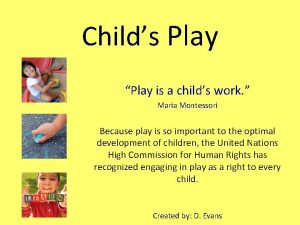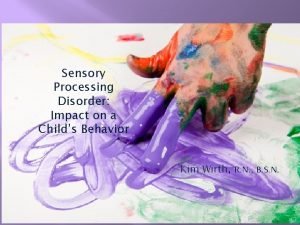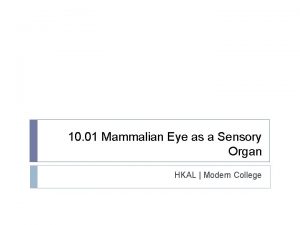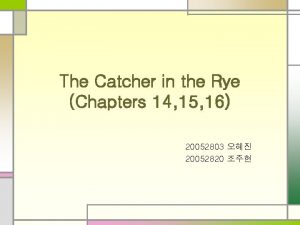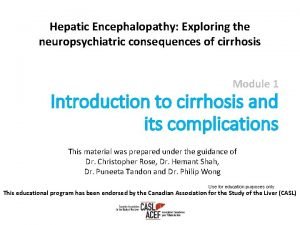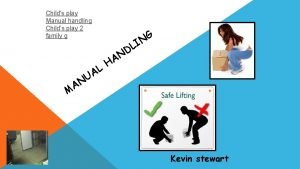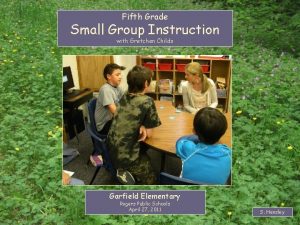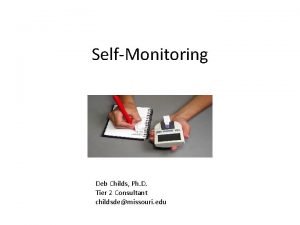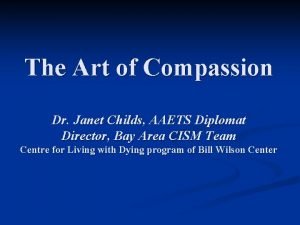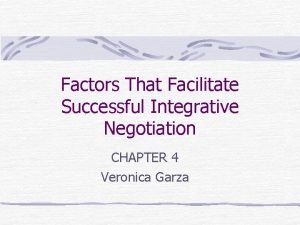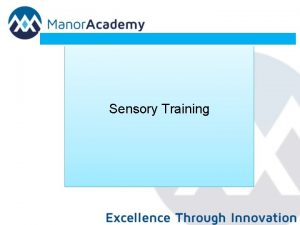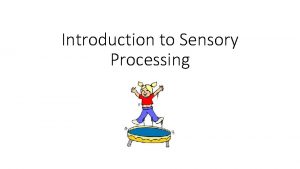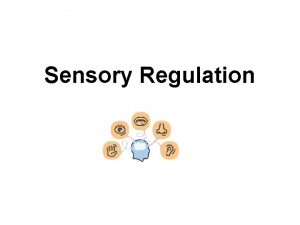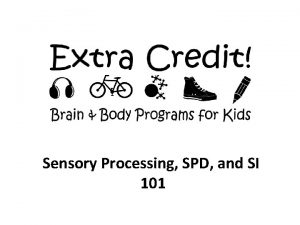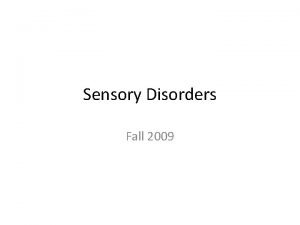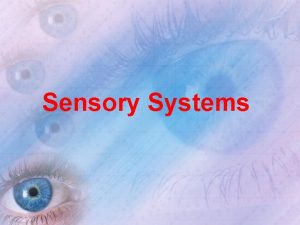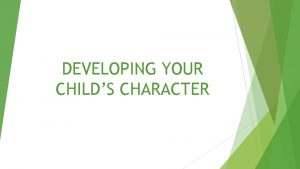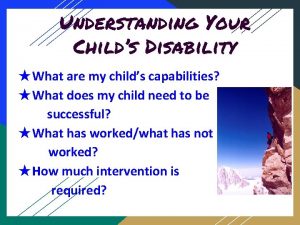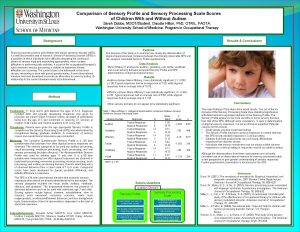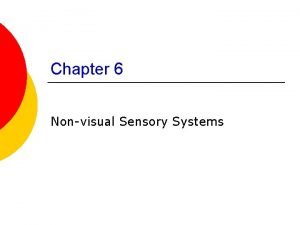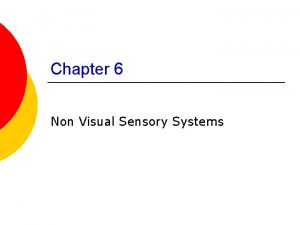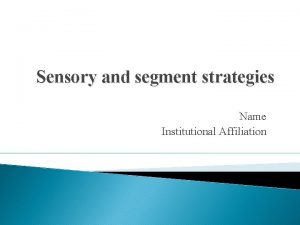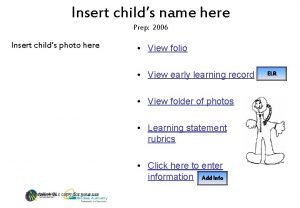Sensory Processing Strategies to facilitate your childs regulation



















- Slides: 19

Sensory Processing Strategies to facilitate your child’s regulation in home and at school Kathryn Polidoro, MOTR/L

Sensory Processing refers to the method or manner in which sensation is detected and sent to the central nervous system to be interpreted. The inputs are processed and organized in the brain to produce useful body responses, perceptions, emotions, and thoughts in order for an individual to engage in their environment appropriately. When the process of sensory integration is not developed properly, the ability to process and respond appropriately to sensory input may be disrupted and difficulties in learning, behaviors, engagement with peers, and motor development may be present

Where is the information coming from? Five Senses: Auditory (Hearing) Visual (Sight) Tactile (Touch) Olfactory (Smell) Oral Tactile/Gustatory (Taste) ++Plus 2 more “heavy hitters” not widely spoken about! Vestibular (Movement, Posture, and Balance) Proprioception (Body Awareness and Coordination)

Application to School vs. Clinic The first and foremost responsibility of an OT in school is to help your child access their education! We do not treat or help to correct things that are NOT educationally relevant Clinic based services have a wider scope of practice Function vs. Perfection

Disclaimer Sensory Processing Disorder is not a recognized DSM-V disorder Not qualifying diagnosis for school This is not meant to diagnose or treat your child in ANY way Comorbidities (co-existing conditions) can complicate situations Clinical observation by a professional is needed to determine underlying causes I may or may not be your child’s therapist and these strategies do not take the place of consultation/treatment with an OT Information is only useful if we receive it- communication is key!

Terms to Know Arousal: A child’s level of alertness at any given moment. Too little arousal often has an inert affect on learners, whereas they will have more difficulty with tasks requiring strength and endurance. Too high of an arousal level decreases attention and cognitive learning ability. Self-Regulation: The ability to manage emotions and behavior in accordance with the demands of the situation Seeking: The degree to which a child obtains sensory input Avoiding: The degree to which a child is bothered by sensory input Sensitivity: The degree to which a child detects sensory input Registration: The degree to which a child misses sensory input Modulation: The ability to “tune in” important or “ignore” irrelevant stimuli to produce proper response

Examples

Auditory Information is gathered by hearing. Behaviors observed can include: Covering ears Becoming emotional/distressed in crowded or noisy places Humming Talking too loudly

Strategies Headphones Cause and effect with noise Controlling the stimulus that is causing discomfort (i. e. blender, vacuum) Slow rhythmic music White noise machines with a steady beat or sound Be aware of background noise Be aware of fluctuating volume Give warnings when possible

Visual Information gathered by sight Different from acuity (ability to see clearly) Observable behaviors: Squinting or avoiding bright lights Staring intensely at objects Watching objects or people out of the corner of their eyes Watching items spin or roll Difficulty scanning their environment

Strategies Change the lighting Wear lightly tinted glasses Create a barrier when reading or writing Reduce clutter Flashlight tag Balloon tennis I Spy Highlighting written work or lines on a page

Tactile Information via touch First system to operate in utero Receptors all over our body respond to light touch, pressure, vibration, temperature, and pain Both protective (danger) and discriminative (quality) properties

Strategies High fives throughout the day Engagement with various tactile mediums Theraputty or koosh balls Hand massage Wheelbarrow walking Deep pressure to back, hips, shoulders Weighted vest Fidget toys Defining a spot (example: carpet square) Front or back of line Use firm pressure when directing or touching the child

Oral Tactile Information gathered by taste and/or in the mouth When therapists or professionals assess difficulty, we look for the 3 T’s Taste Texture Temperature

Strategies NUK brush or smooth chew toy Jaw pressure techniques Massaging temporal mandibular joint Vibrating toothbrush Crunchy, chewy snacks

Vestibular The vestibular is a sensory system that responds to changes in the position of an individual’s head in relation to gravity and accelerated or decelerated movements. It influences a child’s equilibrium, posture, balance, and muscle tone, directs eye gaze, and preserves a constant plane of vision. Over-reactive- fearful of change in head position Under-reactive can crave movement or seem unaware of gravity

Strategies Trampoline Slow rocking or swaying Swinging can be alerting or calming Fidget toys T-stools Movement breaks in chair and desk or structured throughout the day Upside down

Proprioception is the internal awareness received from muscles, tendons, and joints that help to provide and individual with a sense of effort. Proprioceptive input informs the brain when and how muscles are contracting or stretching, as well as when and how the joints are bending, extending, or being pulled or compressed. The information sent to the brain allows an individual to unconsciously sense where their body is in space, how it is moving, and helps guide the execution of future motor tasks.

Strategies Joint compressions Wheelbarrow walking Lap “snake” (weighted) Deep pressure massage Stretches Blanket wrap Neoprene vest Lycra/spandex clothing Hideout, fort, or quiet corner Weighted utensils
 Childs work childs play
Childs work childs play Sensory processing disorder dsm
Sensory processing disorder dsm Types of autism spectrum disorder dsm 5
Types of autism spectrum disorder dsm 5 Sequence of sensory processing
Sequence of sensory processing Love and logic
Love and logic Perceptual reasoning
Perceptual reasoning Chapter 15 catcher in the rye
Chapter 15 catcher in the rye Childs pugh mdcalc
Childs pugh mdcalc Naughtia childs porn
Naughtia childs porn Manual handling childs play
Manual handling childs play Kenna childs wikipedia
Kenna childs wikipedia Dee childs
Dee childs A childs sleep poem
A childs sleep poem Clear liquid diet foods
Clear liquid diet foods Gretchen childs
Gretchen childs Gretchen childs
Gretchen childs Deb childs
Deb childs Janet childs center for living with dying
Janet childs center for living with dying How to facilitate a group
How to facilitate a group Factors that facilitate successful integrative negotiation
Factors that facilitate successful integrative negotiation
